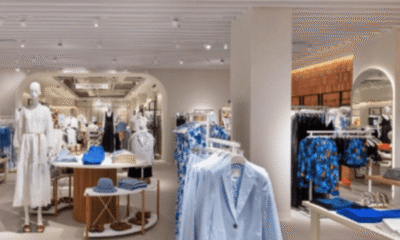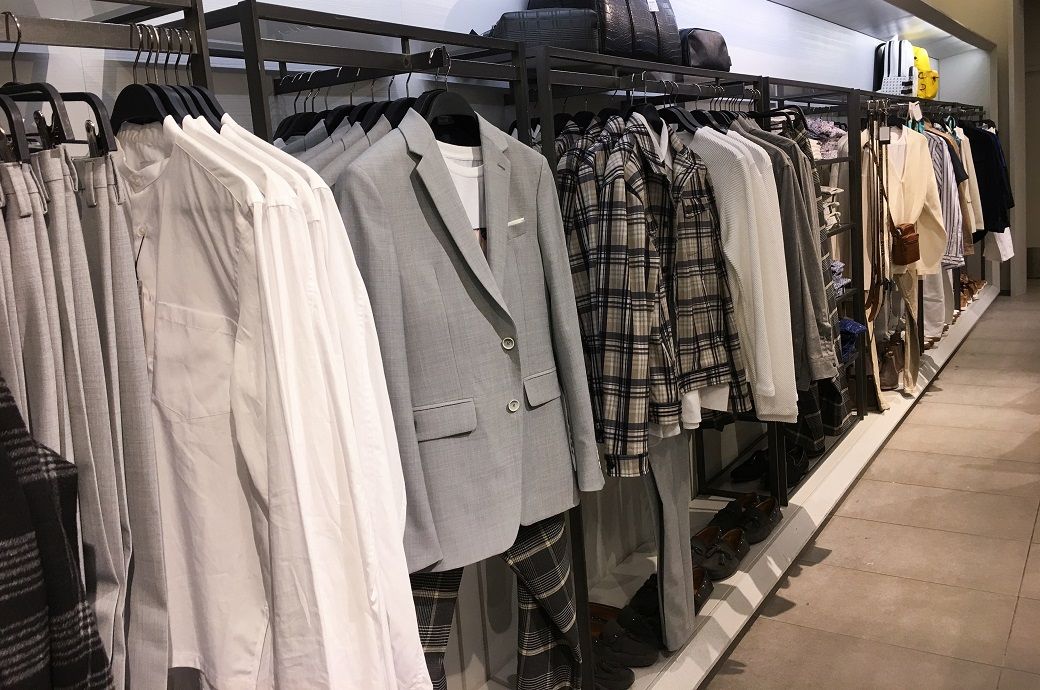Fashion
Burberry: Rock ‘n’ roll revamped
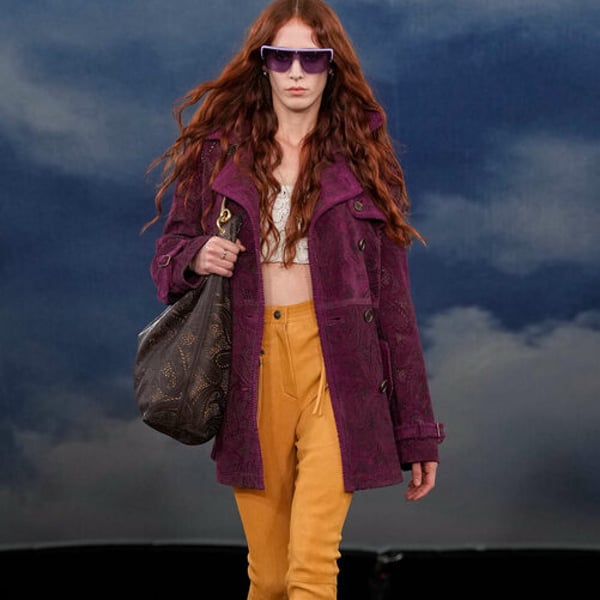
Published
September 22, 2025
Burberry climaxed the five-day London Fashion Week Monday night with a cool and concise rock ‘n’ roll revival show that refreshed the marque with plenty of punch and polish.
Staged inside a tent in the northwest corner of Hyde Park, the show attracted a great front row: Jason Statham and Rosie Huntington-Whiteley; rapper Skepta and soccer legend, Ian Wright; Elton John and David Furnish; songstress Raye and soul singer, Olivia Dean.
Designer Daniel Lee’s intention was clear from the opening looks and chords: a bright waxed plaid trench dress worn with rugged boots on a model with Marianne Faithfull hair; followed by a waxed denim trench on a guy with a Hendrix afro. The soundtrack: a great booming remix of “Planet Caravan” by Black Sabbath. A band that Lee’s Harley Davidson-riding dad adored, and whose singer Ozzy Osborne recently passed this year.
Matter of fact, not a single ensemble would look out of place on a rock star: from the dolly bird white moulded A-line cocktails finished in chains and golden or turquoise macramé party sheathes for gals. To suede lace Lothario rocker trenches for guys, to some seriously crisp suits, cut with peg legs and snug jackets.
Lee kept the brand’s plaid theme going with great waxed parkas, girly pants or military boots. Leather posh hippie spy coats and bags with long fringes, all looked great as the Black Sabbath montage, including “You Won’t Change Me”, boomed out.
Like the collection, the palette had plenty of kick: acid green, salmon pink, bitter yellow; attention- seeking, but all the better for that.
“Summertime in the UK is so synonymous with music culture. This year felt extra special, with the Oasis tour, Beyoncé at Glastonbury, Kendrick was here. Every few days incredible music at festivals, and the Beatles movie is coming up. But it was a wonderful mod ballet at Saddler’s Well that first got me thinking how to celebrate that… Musicians have always had incredible style, and I wanted that exchange between music and fashion,” Lee explained backstage.
Underlining his goal is to make clothes that require skill to produce and evoke emotion. “It’s what separates luxury from great UK high street labels, skill and know-how and making historic techniques relevant for today,” Daniel added.
The overall look was perhaps not so path-breaking. Nonetheless collectively the collection – with its unexpected techniques – seemed very of the moment. Just right for today.
The show comes at a delicate moment for Burberry, the United Kingdom’s leading luxury brand, Burberry suffered a 15% decline in annual revenue in the 12 months ending March 29 to £2,461 million, while operating profit plummeted over 90% to a mere £26 million. This collection, however, seemed very commercially savvy, and timely.
The night before, the house unveiled its latest retail concept, Scarf Bar, whose debut space was inside Burberry’s giant Regent Street flagship.
“Scarf Bar offers 200 styles of Burberry scarves, from heritage to new creations. We plan to open 30 Scarf Bars in the next three months,” beamed CEO Joshua Schulman, who joined Burberry 15 months ago in July, 2024.
Offering a great selection of classic and punchier new plaids, made in a selection of materials: cashmere, mohair, wool and silk, or mixes of all four. Situated on the south side of the store, the Scarf Bar cleverly utilizes a slightly forgotten retail space that opens out on to Vigo Street. It’s also a smart example of Schulman – a veteran retailer with experience at department store giant Neiman Marcus.
Schulman, according to UK media reports, is the highest paid luxury executive in Britain. The 52-year-old Los Angeles-born Schulman, who was also previously CEO of Michael Kors, Coach and Jimmy Choo, reputedly has an annual salary of £2.6 million.
Since arriving, Schulman has ordered a reset, and in May unveiled plans to lay off 1,700 people or some 20% of its workforce, tough decisions greeted positively by shareholders. With the group’s share price rising 50% since his appointment.
Schulman has a major task on his hands, and a major upside if he is successful. Should he double Burberry’s share price in three years he will earn a £3.6 million bonus.
Post-show, both designer and CEO were in an ebullient mood, hosting a bash inside Chiltern Firehouse, the 26-suite London hotel famed as a celebrity hangout, which is also undergoing a restoration since burning wood from a pizza oven caused a huge fire back in February. The fact that Chiltern Firehouse would permit a soft pop-up for Burberry, a reminder of house’s unique position in Britain.
But tonight, far from being a “Bonfire of the Vanities”, Burberry suddenly began looking in pretty good shape.
Copyright © 2025 FashionNetwork.com All rights reserved.
Fashion
China retains lead as South Korea’s top textile supplier
Fashion
Mango opens first store in Aberdeen, ninth in Scotland
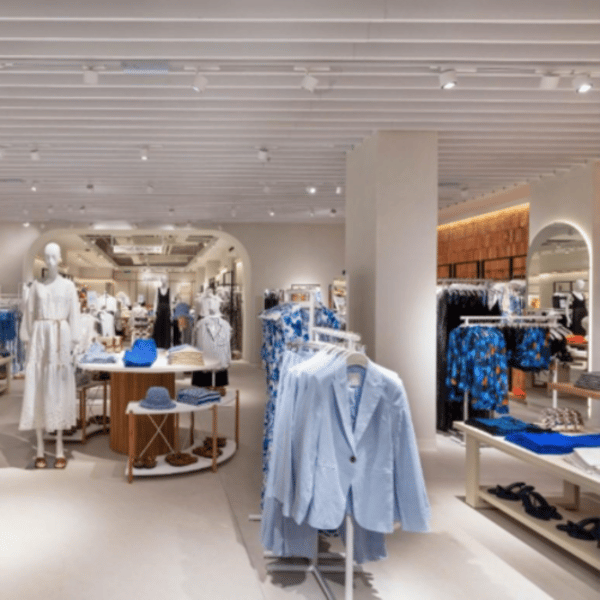
Published
November 7, 2025
Global fashion retailer Mango has opened its first store in Aberdeen at the Union Square shopping centre, creating 20 new jobs. It’s the ninth store in Scotland, as Mango looks to strengthen its presence there.
Mango also said the opening forms part of its ongoing ambitious expansion strategy, which aims to open a further 500 stores globally between 2023 and 2026, including 20 in the UK this year
The 4,844 sq ft store features the brand’s now-standard New Med design concept, inspired by the brand’s Mediterranean heritage and culture, alongside Mango’s latest womenswear collection, including clothing, footwear and accessories.
This latest opening forms part of Mango’s 2024-2026 strategic plan, which aims to drive sales and store expansion, including an ambitious roadmap to expand Mango’s store presence across the UK, “a priority growth market”.
Fiona Cullen, International Regional director for the UK & Ireland, said: “Our new Mango Woman store in Aberdeen is a confident step forward for Mango, building on the strong progress we have made over the last year to broaden the appeal of Mango to even more customers across the UK. Aberdeen is the perfect new home to introduce our womenswear collection to the more Scottish customers, in a store format that truly represents the Mediterranean soul of our brand.”
The expansion plan builds on Mango’s strong performance. In July the Spanish brand reported global turnover of €1.73 billion (£1.52 billion) inforthe first half of 2025, up 12% year on year (14% at constant exchange rates). It noted the growth was driven by “the popularity of its collections and new store openings”.
Copyright © 2025 FashionNetwork.com All rights reserved.
Fashion
Ba&sh’s Hélène D’Auriac: “We’re all striving to create an It bag”
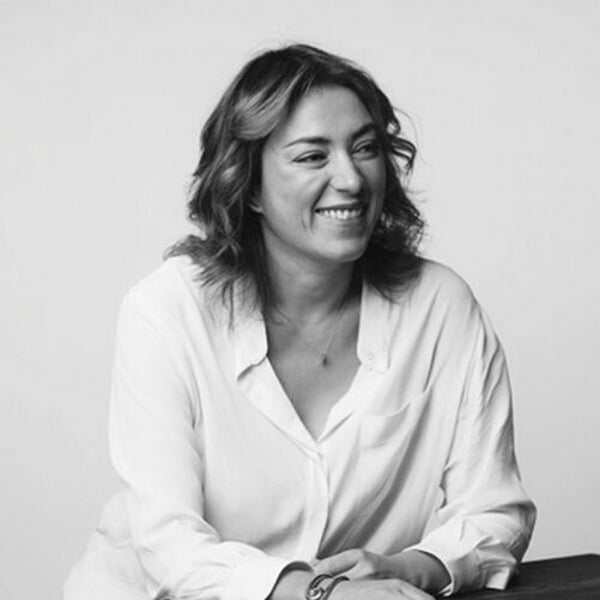
Published
November 7, 2025
Ba&sh spotlighted its handbag range on bus shelters, at Paris Métro exits, and in magazines in September to mark the launch of its Youyou model. It’s a category that’s booming in French premium fashion, strengthening year after year. Having worked at Louis Vuitton, Marc Jacobs and, more recently, Chloé, Hélène D’Auriac now oversees the expanding accessories range for the brand founded by Barbara Boccara and Sharon Krief in 2003. For FashionNetwork.com, she analyses this market and outlines her approach to continuing to grow these offerings.
FashionNetwork.com: In September, you launched the Youyou bag, with a highly visible campaign fronted by Abby Champion, notably on the façade of Galeries Lafayette.
Hélène D’Auriac: The Youyou resonated immediately. It was a surprise, because we were positioning the bag slightly higher than our core range, which is around 395 euros. This one is a 450-euro bag. Over the last two years, we’ve had two major, successful launches.
FNW: In other words?
HDA: Last year, the June Tote took off right from the start. We were managing restocking every week, with around twenty restocks to keep up with demand. Then, this year with the Youyou, it was a pleasant surprise to be able to enter this price bracket. But it also responds to the crisis of confidence the luxury industry is experiencing. Consumers are looking for good value for money, while prices have climbed in some houses that have become a little disconnected from the consumer. They have a keen eye and understand sourcing and materials… This enabled us to capture an audience, because I think we’re starting to gain recognition in the leather goods sector for our expertise. This amplified our success.
FNW: You’re very familiar with the high-end segment. Before joining Ba&sh seven years ago, you worked in luxury houses. What was the challenge of moving to a premium ready-to-wear brand?
HDA: I’m a specialist in luxury accessories. When Ba&sh recruited me, L Catterton was a shareholder. So there was already a luxury culture, but they hadn’t really developed or amplified this category yet. In the course of my career, I’ve seen a few hit-bags come and go. At Ba&sh, we really had to bring in luxury know-how, new sourcing, different methods and designers. This meant instilling an accessories culture within a house that was culturally very ready-to-wear.

FNW: What difference did it make to integrate these skills?
HDA: It enabled us to work on a premium offer, developed in Europe with Italian leathers, and to incorporate responsible standards such as the Leather Working Group label. Barbara and Sharon gave me a great deal of freedom in this new creative territory for them. It was a strong vote of confidence, as the timelines, methods, and sourcing are completely different. I delved into the house’s DNA to understand its signatures, codes, materials, craftsmanship, and effortless spirit, in order to identify everything that makes up Ba&sh’s identity and to apply it particularly to this new category of bags.
They already had products that were starting to emerge, but the aim was to really develop the leather goods category. I think one of the reasons for our success is that we’ve done it authentically, offering a distinctly luxe range with a very competitive price–quality proposition. We’re in the affordable luxury segment, and our aim was to deliver very good quality at one-fifth or even one-tenth of competitors’ prices. The category took off immediately. Since my arrival seven years ago, we’ve seen double-digit growth in this category every year.
FNW: With the strong momentum from the last two years’ launches, is there a recipe for creating a successful bag?
HDA: That’s the question we all ask ourselves. How do you create a hit-bag? I think the first step is to work on the design, aiming for something fairly timeless. The second point is to remain consistent in your message by aligning the proposition with marketing, merchandising and digital, and then to stay the course rather than call everything into question as soon as there’s a fluctuation in sales. We’re seeing this in luxury, with a major return to icons.

FNW: And then how do you leverage it? How do you extend the success to different products?
HDA: Once we have a bestseller, the first thing is to keep expanding the choice of materials and signature details. Leather goods are growing very strongly, and we’re seeing strong progress across all accessories, especially jewellery. We’ve applied the same emphasis on know-how, using recycled silver and truly original design, which has generated extremely strong growth. But to come back to the bag, the question after the hit-bag is how to turn it into an icon.
“Brands that have succeeded in turning their leather goods into icons have an advantage when it comes to withstanding crises.”
FNW: What’s the difference?
HDA: It’s not necessarily a question of volumes. In our industry, a bag that lasts more than a year is already a hit-bag. For luxury brands, the great icons are bags that have been around for 20, 30, sometimes 40 years. In accessible luxury, timelines are a little shorter. So I’d say a bag becomes iconic when it’s been on the market for three to five years. But we want to achieve the same feat as some premium brands from the 80s and 90s, which have had icons for over 20 years. I think this is also important, because brands that have succeeded in turning their leather goods into icons have had an extra advantage in withstanding successive crises in the sector.
FNW: For the past month, you’ve been promoting a new version of the June Tote. It’s not really a new bag…
HDA: It’s the same shape but in a smaller format. This increases the visibility of the model, and in this spirit we’re working on other formats. We’re making progress on material and colour variations, as well as more image-driven elements such as embroidery, stones or fringes, which reflect the brand’s DNA, with proposals due out in January. What’s interesting is that in a small format, the clientele is generally younger, and with the work on details, we’re speaking to more sophisticated customers. These different versions allow us to build a common thread around the model.

FNW: In concrete terms, how many bags do you currently have? And are they all intended to be active on the market at the same time?
HDA: We are careful not to dilute our messaging so as not to lose momentum on the key product. We have three main product families, which come in different formats, details, and colours. We have the June Tote, launched a year ago. The Youyou, launched in September, will appeal to our ready-to-wear customers. We have the Swing, which is a satchel with fringes and is fairly seasonal but corresponds to our aesthetic. And then we have a fourth family of purely seasonal products that last for six months and respond precisely to seasonal trends, catering to our very fashionable and often quite young clientele. But the majority of sales are generated by our first two propositions. This can be explained by the fact that for consumers there’s a strong notion of investment in the purchase of a bag, and they turn to the most iconic models. The very good surprise is that we have two models that are performing very strongly at the same time.
A new phase in consumption
FNW: But you’re not the only ones performing well in this category. How do you explain this dynamic?
HDA: For our part, the category accounts for 11% of sales and we’re aiming to reach 15% within three years. We’re really on a springboard, and I think it’s a strength to have a high level of creativity with beautiful materials and finishes. I also think we’re benefiting from the rise of “new luxury” brands, which offer a very high-end range with an excellent retail experience but the price positioning of the historic luxury brands. We’re entering a new phase where consumers will be looking for very high quality, but will be paying close attention to price. We have opted for European production and possess the retail expertise our customers expect; they now look to accessible luxury brands for creativity that was previously the preserve of luxury.

FNW: You spoke of a common thread that brings models to life for consumers. How do you go about this?
HDA: For accessories, there are a number of major moments. We’ve just come through back-to-school, with all the September issues that focus on accessories. It’s a time to launch new products, as we did with the Youyou. The second major moment, which is the annual sales peak, comes in December. We can double our sales compared with other months. So we’re going to have different strategies: newness at the start of the season, and a focus on bestsellers in December, with the launch of new colours and materials. This involves activations, such as a pop-up at Galeries Lafayette this month; we work with influencers who love the brand, and we’re launching an image campaign that I think will be quite striking at the end of the year. These different approaches enable us to appeal to different profiles. And we’ve found, for example, that 40% of June Tote customers are new, and that 25% are under 35. This also enables us to reach a younger clientele.
FNW: On the strength of this growth, are you planning any launches for 2026?
HDA: We’re trying to slow down a bit. But we have lots of ideas and projects. We see potential around the brand’s identity, for example with an evening offering, but also with textile totes at a more accessible price point. But we really need to come up with a differentiated offer. We also see that our jewellery know-how can be leveraged in a sandal range or, again, for evening. Ba&sh is also in the process of becoming a genuine lifestyle brand, exploring an innovative approach to well-being. Here, we’re working with our ready-to-wear teams to provide complete silhouettes for yoga retreats, for example. We’re also doing this with a Coachella-themed offer, with clutches for going to festivals. It’s exciting because we’re working across several new territories in parallel.
This article is an automatic translation.
Click here to read the original article.
Copyright © 2025 FashionNetwork.com All rights reserved.
-

 Tech1 week ago
Tech1 week agoNew diode chain could be used to develop high-power terahertz technologies
-
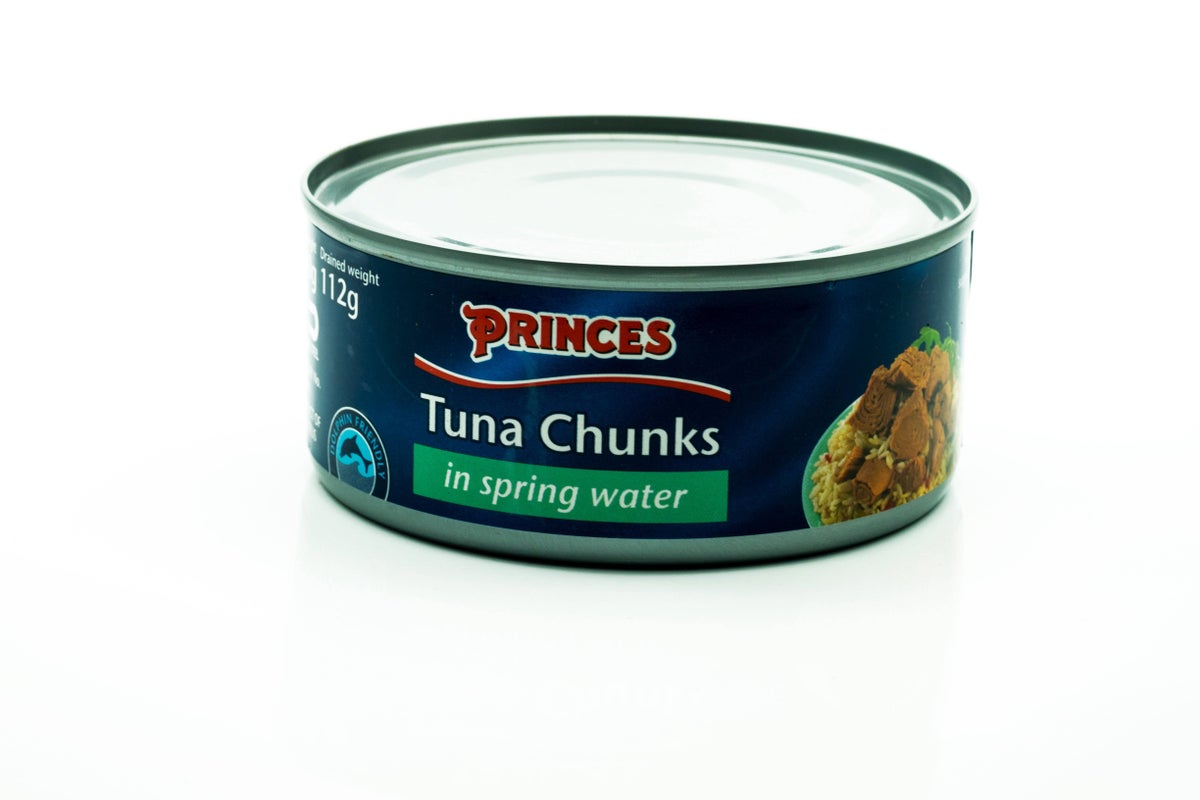
 Business1 week ago
Business1 week agoPrinces Group valued at £1.16bn as food firm launches London float
-

 Tech1 week ago
Tech1 week agoDisney content has gone dark on YouTube TV. Here’s what customers should know
-

 Business1 week ago
Business1 week agoChocolate’s reign over Halloween is under threat from inflation, tariffs and high cocoa prices
-

 Tech1 week ago
Tech1 week agoGiant, Spooky Animatronics Are 75 Percent Off at the Home Depot
-

 Fashion1 week ago
Fashion1 week agoUS Senate passes legislation challenging Trump’s tariffs on Canada
-

 Sports6 days ago
Sports6 days agoTudor’s Juve exit means McKennie must prove himself all over again
-

 Politics1 week ago
Politics1 week agoSaudi Arabia makes changes to visa rules for Umrah








